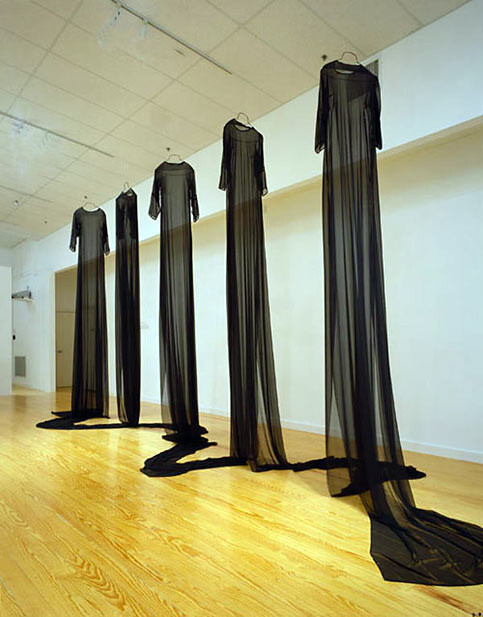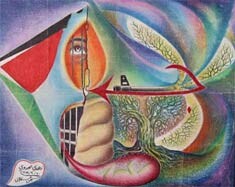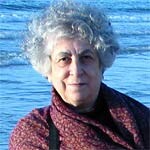The Electronic Intifada 12 April 2005
In the summer of 2003, I traveled to Palestine to write some articles for a few left-wing publications and websites. Dividing my time between East Jerusalem, Ramallah, Nablus, Jenin, and a handful of small villages, I shared countless cigarettes and pots of tea or coffee, along with an occasional meal, with Palestinians who told me about life under Israeli occupation. The checkpoints, home demolitions, curfews, early morning or late night military incursions, which together were the expressions of Israel’s cruel presence in the areas west of the Jordan River, were a consistent topic of conversation.
One afternoon, wanting to get an idea of the affects of Israeli enclosure on the economy of Palestine, I visited a Ramallah-based company that produced household and cosmetic products. Standing outside the factory that day, one could see the outskirts of Jerusalem some distance beyond the remnants of dilapidated carnival rides that rose above the nearby roofs. Inside the factory, a company representative laid out for me the convoluted processes his business had to follow in order to export their products. I could barely understand the bureaucratic schema much less imagine adhering to its procedures.
Our meeting over, he handed me a selection of the company’s cosmetic products as a gift. “Look,” he said while pointing to a label on a package of facial mud “Made in Palestine!” Indeed, in bold, boxy typeface were printed those very words. Then, through a huge toothy grin, he told me that this label was illegal under the codes I had just been told about.
Made in Palestine. The prohibition of those words appearing on products cuts to the core of the Palestinian struggle - an Israeli occupation that attempts to thwart any assertion of a Palestinian history or identity. But the production of those goods, with their prohibited label intact, also shows the steadfastness and inexhaustibility of the Palestinian people in the face of those efforts.
This contest between occupation and self-determination, history and erasure also establishes the subject for the first contemporary exhibition of Palestinian artwork in the United States. Fittingly, and perhaps a bit defiantly, the show is titled Made In Palestine.
The exhibition — on display from April 7th through the 21st at the SomArts Cultural Center in San Francisco’s South of Market district — is a collection of works from twenty-three artists, most of whom currently reside in Palestine. Included in the exhibition are two-dimensional works on paper or canvas, photos and sculpture, as well as textile and video installations. Together, this array of mediums becomes the tool for very personal and compelling commentaries on Palestinian identity and struggle.
“The show,” says Samia Halaby, an emeritus Yale University professor of art and exhibition participant, “[highlights] the power of the Palestinian experience.” She says that although the content of the exhibition may be intensely political, it is conveyed through the unique experiences of the works’ authors and therefore also highlights “a very personal experience.” Halaby, who has written a book titled Liberation Art In Palestine, says there is a rich history of modern Palestinian art into which the exhibit taps.

Detail from “Los Explotadores”, a 1926 fresco by Mexican artist Diego Rivera.

Detail of a 1910 abstract piece by David Burliuk, the “father of Russian Futurism”.
Its earliest members where influenced by the Mexican mural art tradition and Russian Futurist style of the early 20th century. Their primarily two-dimensional paintings or drawings were often meant to communicate to an exclusively Arab or strictly Palestinian audience. The colors of the Palestinian flag were frequently prominent in their works as were symbols of the Palestinian liberation movement. More contemporary Palestinian artists, says Halaby, perhaps due to their Western upbringing or influences, are attempting to communicate to a wider viewer base and are constructing more installation or multi-media type forms. Visitors to the Made In Palestine exhibition will have the opportunity to view both approaches.

Artist: Mary Tuma. Title: Homes for the Disembodied, 2000. Media: 50 continuous yards of silk, 13’x25’.
Among the latter group of artists is Mary Tuma, a North Carolina-based artist and academic. Her installation, Homes for the Disembodied, is constructed from 50 continuous yards of black translucent silk. According to Tuma, “the singularity of the form is meant to symbolize the interconnectedness [of Palestinian life].” Tuma has woven this fabric into five slender dresses that are then suspended from high above the gallery floor. She describes these forms as “providing the spirits [of deceased Palestinians] with a space to dwell.” Her piece is a powerful meditation on loss and remembrance.
The works of Muhammad Rakouie and Zuhdi al Adawi offer up images of repression and resistance. Both have created colorful crayon on cloth compositions while imprisoned during the 1980’s. Each have included some of the elements of Palestine’s early artists described by Halaby: severed prison bars and broken chains, children and birds adorned with the colors of the Palestinian flag, and themes representing the devastation of Israel’s occupation.

Muhammad Rakouie taught himself how to draw with the materials he could acquire—crayon and cut pillowcase linen, while imprisoned in the notorious Ashkelan prison in Israel. Palestinian artists are prohibited from using the colors of their flag or making overt reference to their struggle for liberation and autonomy. The design elements within his smuggled paintings refer to Soviet abstraction and social realism. He risked great pain and additional punishment by creating these images, which stylize prison life and captivity. He now lives in a refugee camp in Damascus, Syria.

While imprisoned in Ashkelan prison, Zuhdi Al Adawi taught himself to make art. His expressionist drawings depict the psychological anguish and physical torture he endured there. He now lives in a refugee camp in Damascus, Syria.
A number of pieces address the reality of Israel’s foundation - its supposed transformation of an underutilized and sparsely populated desert into a blooming, modern state. Emily Jacir’s Memorial to 418 Palestinian Villages Which Were Destroyed, Depopulated, and Occupied by Israel in 1948 is a refugee tent adorned with the stenciled names of Palestinian villages uprooted during Al-Nakba (“The Catastrophe”), referring to the razing of Palestinian villages and dispossession of refugees around the time Israel was established in 1948.
In Father, artist Tyseer Barakat illustrates his father’s life through a series of images displayed within the drawers of an architectural cabinet. The viewer, by sliding open each of the draws, is presented with a different stage of his father’s story — home, diaspora, and exile. Here, these two artists reduce to mythology Israel’s process of “making the desert bloom.” Other works take on issues such as Palestinian’s relationship to land, Israeli military practices, and the incongruity of US and Arab news networks.
Made In Palestine was originally organized by curators from the Station Museum in Houston, Texas and was shown in 2003. Since that time, the show has, sadly, been in storage and organizers from around the county have been attempting to raise funds and secure gallery space in order to tour the collection. Dozens of venues have been contacted, but organizers have received few responses.
“We’ve basically received a ‘no’ from everyone,” says Halaby, discussing efforts in New York City and other cities to secure exhibition space. In November of last year, a group in nearby West Chester County, New York organized a benefit to raise funds to have the exhibition in their community. A pair of county representatives went ballistic on hearing about the event and fired off an angry press release that characterized the Made In Palestine exhibit as “offensive art that glorifies terrorism” and “contained anti-American, anti-Israel and anti-Jewish hatred, as well as pays tribute to terrorists.” A state legislator described the exhibit as a “propaganda show for assassins.” The benefit went ahead as scheduled, but the incident exemplifies the impediments in having Made In Palestine displayed in cities across the country.
Getting the San Francisco show off the ground, however, has proven to be far less problematic. “It’s been a conspiracy of circumstances,” says Susan Green who has been central in orchestrating the SomArts exhibition. Since 1989, Green has been traveling to and organizing art projects in Palestine. On one of these trips last fall, she spoke with Barakat in Ramallah about Made In Palestine. She was fascinated by his description of the exhibition. Coincidentally, Green and a small group of other Bay Area artists had sought to curate a show of their own work about the occupation of Palestine: “So, we decided that if SomArts would agree to having [the Made in Palestine show] instead of our show we would then turn our attention to promoting the show and making it happen.”
The efforts of Green, along with those of the Justice in Palestinian Coalition, have meant that the San Francisco exhibition is the first time that Made in Palestine has been displayed since the original Houston show. A series of events will coincide with the exhibition throughout the month of April.

Samia Halaby
See you at the show.
Rob Eshelman is a San Francisco-based journalist. His articles have appeared in the San Francisco Bay Guradian, Brooklyn Rail, Counterpunch, and Clamor. He can be e-mailed at robeshelman@riseup.net.
Related Links
